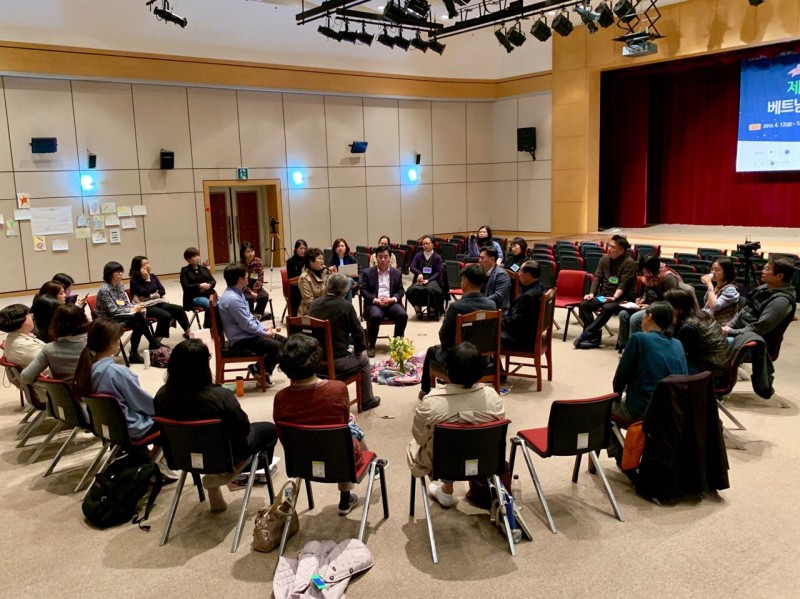 Linking Korean Historical Traumas in Gwangju
Linking Korean Historical Traumas in Gwangju
Linking Korean Historical Traumas in Gwangju
by Curry
In 1945, the Japanese empire was defeated and Korea was divided and occupied by Americans in the South and Soviets in the North. Jeju citizens who called for a unified Korea were oppressed by police and when they rose up against police violence, Jeju was labelled a ‘Red Island.’ South Korean soldiers who refused to join in the slaughter of Jeju civilians were also met with disproportionate force in Yeosu and Suncheon. In order to escape suspicion of sympathy for communism, many young men joined the Korean army. In the Vietnam War, once again, Korean soldiers massacred civilians in villages they suspected of sympathy for communism. Many soldiers who had participated in the Vietnam War were then sent to suppress the citizens of Gwangju who rejected the authority of the Chun Doo-hwan coup and called for democracy. To this day, this vicious cycle of violence and the complicity of the United States in these events is a very sensitive topic in South Korea.
On April 12-13, St. Francis Peace Center, The May 18 Memorial Foundation, Korea Vietnam Peace Foundation, and Gwangju Nabi (For a Just Resolution to the Problem of Japanese Military Sexual Slavery) co-hosted a workshop in Gwangju to connect these historical tragedies. Victims’ family members from the Jeju 4.3 massacre and the Yeosu-Suncheon incident, veterans from the Vietnam War and the suppression of the Gwangju uprising, and a survivor of a massacre during the Gwangju uprising shared their experiences with workshop participants. Though each of these tragic events is rooted in the same stigmatization of whole populations as communist sympathizers and the use of indiscriminate and overwhelming force against them, it was a unique chance for the survivors to meet together in one place and for those who were on the side of victim and of perpetrator to meet and work together to speak out the truth and seek justice.
Photo caption:
On April 12 in Gwangju, workshop participants sat in an outer circle to witness the conversation of people who experienced several of the tragedies of modern Korean history. The inner circle of the 'fish-bowl' provided a safe space for the sharing of personal stories of Jeju 4.3, Yeosu-Suncheon, the Vietnam War and the Gwangju Uprising. Photo by Korea Peacebuilding Institute.
